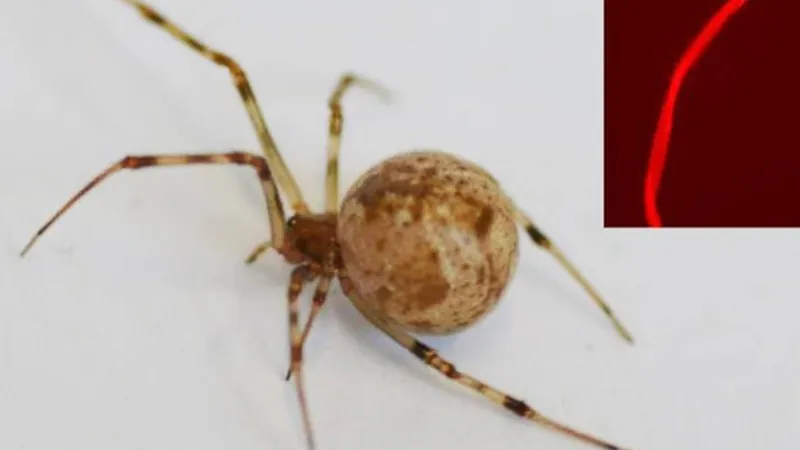
Revolutionary Genetic Breakthrough: German Scientists Create Glow-in-the-Dark Spider Silk!
2025-05-22
Author: Nur
In a stunning breakthrough that could redefine genetic engineering, researchers at the University of Bayreuth, Germany, have successfully modified a common house spider's genes to produce vibrant red fluorescent silk. This pioneering achievement marks the first instance of using CRISPR-Cas9 technology to alter the genetics of a spider.
CRISPR-Cas9, known for its transformative power in the fields of agriculture and medicine, has primarily been employed on plants and microorganisms—until now. The team has now opened a brand new chapter in genetic manipulation.
What Is Genetic Engineering?
Genetic engineering, often referred to as genetic modification, involves altering an organism's DNA to create unique traits or characteristics. This powerful technology has started to revolutionize numerous industries, providing new opportunities for innovation.
The Breakthrough Methodology
Achieving this groundbreaking feat came with its own set of challenges. Spiders, known for their complex genetics and often cannibalistic behavior, make genetic manipulation particularly intricate. To overcome these hurdles, scientists crafted a special CRISPR solution embedded with a gene for red fluorescent silk. This revolutionary solution was carefully injected into unfertilized spider eggs.
To ensure the spiders remained still during this delicate process, they were temporarily anaesthetized using CO₂. Afterward, the modified male and female spiders were bred, resulting in offspring that produced the breathtaking red silk without altering the silk's inherent properties.
Exploring Spider Genetics Further
In a bid to deepen their understanding, researchers also implemented a technique known as CRISPR-KO to suppress a gene responsible for eye development in spiders. The outcome? Spiders born without eyes—providing valuable insights into spider genetics and further enhancing the significance of their research.
The Future of Spider Silk: A Game-Changer
According to Professor Dr. Thomas Scheibel, the senior author of the study, this groundbreaking work has enabled a new level of functionality for spider silk. Renowned for its strength, elasticity, and biodegradability, spider silk is a remarkable natural fiber. With these genetic modifications, the potential applications of spider silk could be vast—ranging from advanced biotech solutions to revolutionary materials in textiles and medicine.
This innovative research not only highlights the potential of genetic engineering but also sets the stage for future advancements in the field. Who knew a common spider could lead to such extraordinary possibilities?




 Brasil (PT)
Brasil (PT)
 Canada (EN)
Canada (EN)
 Chile (ES)
Chile (ES)
 Česko (CS)
Česko (CS)
 대한민국 (KO)
대한민국 (KO)
 España (ES)
España (ES)
 France (FR)
France (FR)
 Hong Kong (EN)
Hong Kong (EN)
 Italia (IT)
Italia (IT)
 日本 (JA)
日本 (JA)
 Magyarország (HU)
Magyarország (HU)
 Norge (NO)
Norge (NO)
 Polska (PL)
Polska (PL)
 Schweiz (DE)
Schweiz (DE)
 Singapore (EN)
Singapore (EN)
 Sverige (SV)
Sverige (SV)
 Suomi (FI)
Suomi (FI)
 Türkiye (TR)
Türkiye (TR)
 الإمارات العربية المتحدة (AR)
الإمارات العربية المتحدة (AR)